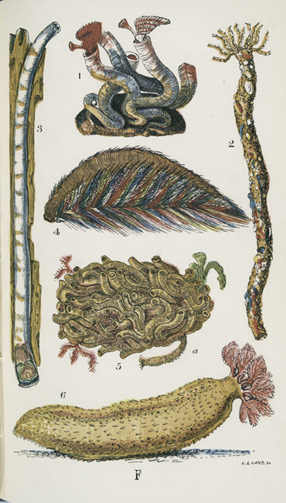

• Intro / Home
• Historical Neighbors
• Street and Backyard
Neighbors
• Park and Green Places
Neighbors
• Shore and Wetlands
Neighbors
• Salt and Freshwater
Neighbors
• Tiny Neighbors
• Unwelcome Neighbors
• Occasional and
Unexpected Neighbors
•
Wildlife Sighting Log
• Resources
• Hours and Tours
• Press Release
• NYPL HOME
| Unwelcome Neighbors | |
Teredo navalis (left - hand figure), although wormlike in shape, is actually a wood-boring bivalve mollusk related to clams. One of the few animals that can actually digest cellulose, the shipworm destroys wood pilings and boats by riddling them with tunnels. Its depredations go back through history: in 1503, on his fourth voyage to the New World, Christopher Columbus lost two of his four ships to borers. Ironically, these invasive marine pests were
not a problem when local waters were heavily polluted. As the harbor
and rivers gradually became cleaner under the impetus of the 1972
Federal Clean Water Act, many previously vanished species returned.
Unfortunately, Teredo and another borer, the crustacean Limnoria
lignorum, or Gribble, were among them. Various waterfront construction
technologies, all costly, have been employed to shore up weakened
structures and prevent new |
